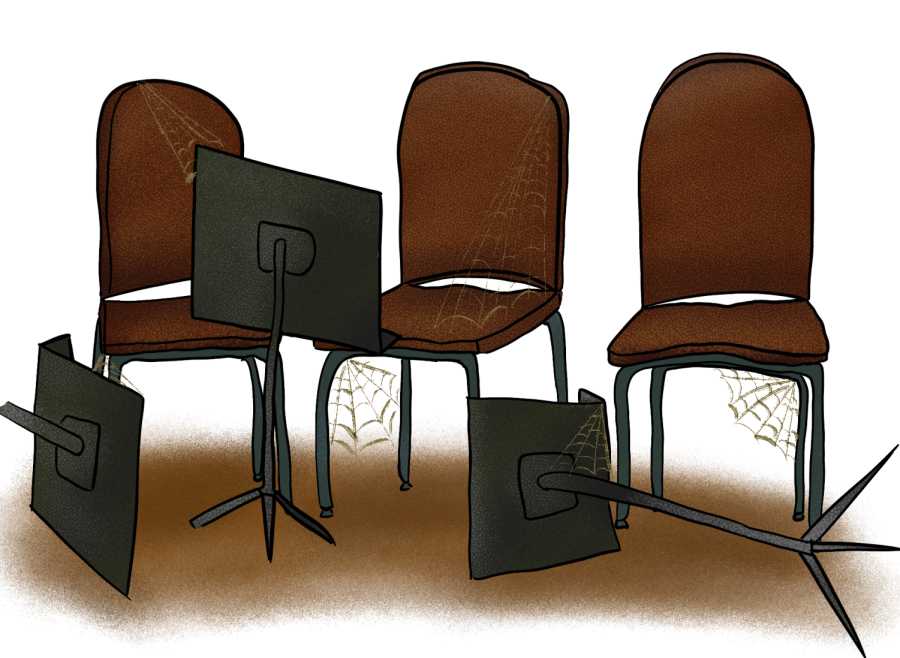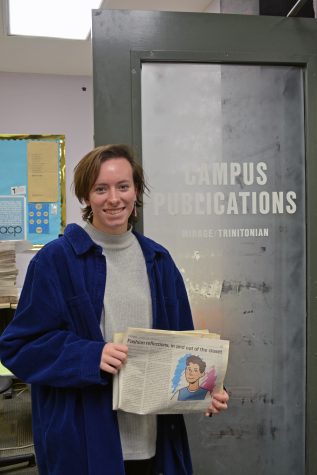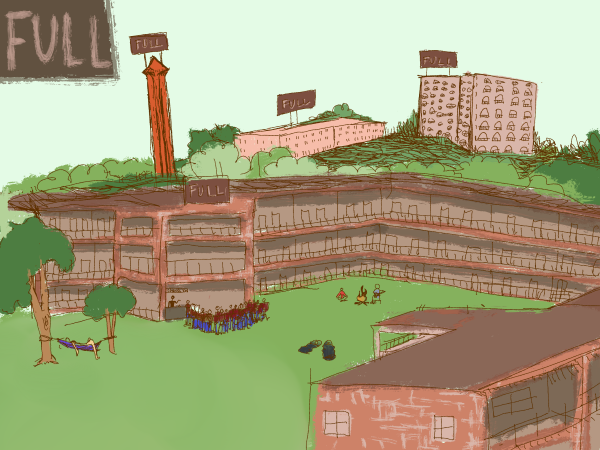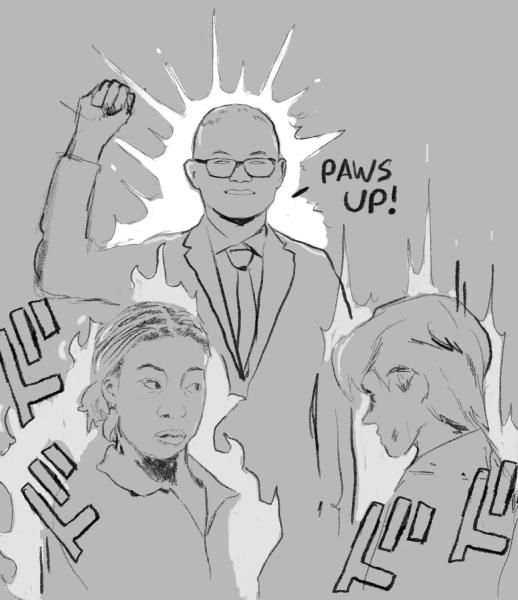San Antonio Symphony strike continues
Five-month strike protesting budget cuts impacts Trinity orchestra professors
Since Sept. 27, 2021, the San Antonio Symphony musicians have been on a strike due to cuts made by symphony management to their salaries and benefits. The proposal offered by management would cut the orchestra from 72 full-time employees to 46, keeping the other 26 as part-time employees. Those asked to work part-time would be stripped of all benefits, while those that remain full-time would have their salary cut in half and have some benefits taken away.
Overall, the cuts do not leave enough to provide for anyone’s livelihood; therefore, the musicians went on strike to demand proper pay and benefits. This has impacted Trinity orchestra professors and the orchestra program, as some faculty members have had to leave the city to work at other symphonies.
Joseph Kneer, associate professor of music, Violin faculty and conductor of the Trinity Symphony Orchestra, has subbed with the San Antonio Symphony, performed and taught alongside its players on numerous occasions and developed many close friendships with the musicians.
“I was really distraught because these people are my friends, my colleagues, some of them have come to do sectional work so coaching with the orchestra, with the string players, I performed with them,” Kneer said. “They are extremely active and are constantly coaching, teaching and performing, so they are really embedded in our community.”
Part of the proposal by the symphony management is to establish an AB structure, which is common for orchestras in smaller cities and towns. It has a core “A” group of musicians who get paid the most, typically musicians who have been there longer. Newer players would be in the “B” part of the structure, and they would get paid part-time with no benefits.
“In a small city that can work sometimes because, since they might not have enough top-rate musicians in the area or enough money to fund them. So, you have your core group and then you bring in other people from nearby places, and that’s a good model for them,” Kneer said. “But San Antonio is the seventh-largest city in the United States. We should have the means, but somehow we currently don’t.”
In order to become part of an orchestra like the San Antonio Symphony, people are first picked based on their resume and then go through a national audition. People come from all over the country, sometimes from all over the world, to take auditions. Usually, there is one spot open for 100 applicants, ensuring only top-rate musicians make the cut.
Trinity’s own Cello Professor David Mollenauer has been a part of the San Antonio Symphony for thirty years, sitting as the assistant principal cellist. Here at Trinity, he is an adjunct orchestra professor.
“When you get a job like this [San Antonio Symphony], many people keep them for their careers because there are so few jobs and so many people trying to get jobs in orchestras. We take it very seriously. It is a job, it is work and it is also a life’s passion,” Mollenauer said. “But I caution myself in saying that because sometimes when we say that to the public they think, ‘Oh well that’s OK, they love what they do so it doesn’t matter if they get paid or not.’ And no, people have to make a living, playing in a Symphony Orchestra is highly skilled labor. It is not just a hobby for us, it is a very serious and very competitive profession.”
These musicians, such as Mollenauer’s wife, Stephanie Key, have had to compensate for their current lack of pay by finding jobs elsewhere. Key is the clarinet professor for the Trinity orchestra but is taking a leave of absence to work for the Dallas Symphony under a one-year contract.
“We currently have four San Antonio Symphony musicians who are on our faculty teaching specific instruments. If they leave, all of that quality of teaching here goes out the window. Our bass professor (Steve Zeserman), our trombone professor (Steve Peterson), our trumpet professor Danny Taubenheim (until he had to leave for a one-year position in Phoenix) and our clarinetist who took a one-year position in Dallas,” Kneer said. “Dallas and Phoenix are wonderful orchestras, renowned. That tells you the abilities of these musicians, to be able to go to those places. It shows you their level of music-making and it shows you that they have cared enough about San Antonio that they haven’t left yet, despite all this going on.”
One first-year student, Ava Ávila-Dickson, heard about symphony protests being held in front of the Tobin Center through the Instagram of the San Antonio Democratic Socialists of America.
“The protest was long and it was really cold, but you could tell there were people who really loved the symphony and were protesting as a means to keep the symphony alive. There were a lot of speakers, I think members of the symphony, some activists,” Ávila-Dickson said. “It’s about the livelihood of these people, especially during COVID and also not just fighting for the symphony but for all disenfranchised workers during this global pandemic.”
Another way to help the San Antonio Symphony musicians is to show up to upcoming concerts they plan with community members. This information can be found on the Musicians of the San Antonio Symphony website. Showing up helps provide some monetary income for the musicians and helps management see that the San Antonio community values their art.
“If you’ve ever gone to the symphony, it’s an incredible experience and it’s very powerful and moving. I feel like it’s a beautiful example of just the heights of mankind’s ability for expressions and creation,” Ávila-Dickson said. “To think that people can make something so complex is insane and I think that is something that should be preserved and celebrated.”
The Trinity Orchestra is at risk of losing other incredibly talented professors because of the lack of compromise within the San Antonio Symphony administration. As a result, San Antonio is losing parts of its artistry, something that many San Antonio natives appreciate about their city.
“It’s [the symphony] an art form, it’s reflective, I think, for people. There is something cathartic about going to any sort of art experience,” Mollenauer said. “I think it is essential to us as a community and as a species. It’s a very abstract form of communication and that’s what’s so wonderful about it because it’s universal, it’s cliche, but it is the universal language.”

Hello! My name is Ivanna Bass Caldera and I am a first-year student from San Antonio, TX. I am undecided but am interested in majoring in communications....
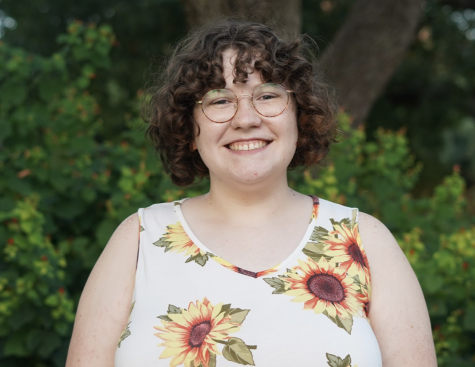
I'm a senior Computer Science major and a Classical Studies minor from Newton, North Carolina with a passion for art. I also work at the Center for Experiential...

